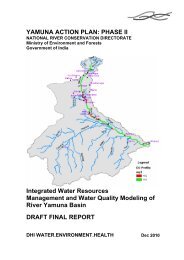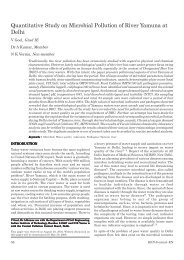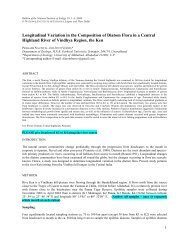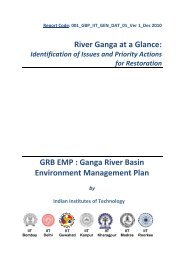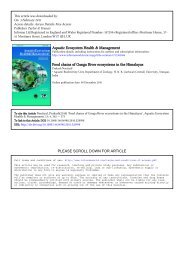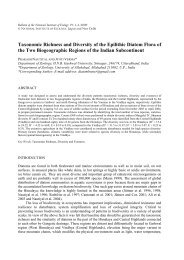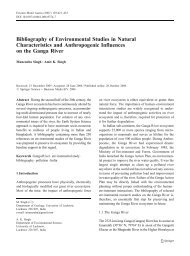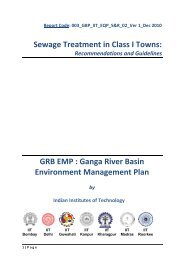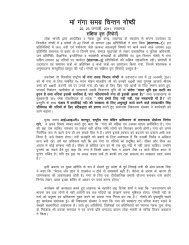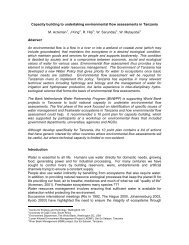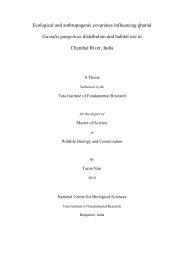JNNURM - GANGAPEDIA
JNNURM - GANGAPEDIA
JNNURM - GANGAPEDIA
You also want an ePaper? Increase the reach of your titles
YUMPU automatically turns print PDFs into web optimized ePapers that Google loves.
City Development Plan for Agra City in the state of Uttar Pradesh under <strong>JNNURM</strong><br />
Keeping in view the project objectives, the scope of work could be segregated into four parts.<br />
Part -1 deals with city assessment & data analysis of the infrastructure/ services,<br />
demography, slum population, Governance & Management and city finance & resources.<br />
Part-2 deals with formulation of vision after conducting the SWOT analysis. The stakeholder’s<br />
consultations, workshop is an important component of this stage. Part-3 deals with the<br />
development strategy and identification of priority actions, consensus building around a<br />
common understanding of the city’s problems and priorities. The identified strategies will be<br />
prioritized and the projects will be identified for Agra city. The projects identified for Agra will<br />
be for the various sectors- urban renewal, infrastructure, slum improvement, environmental<br />
services, transport and road services etc. there will be regular consultations with the various<br />
stakeholders for finalization of the identified projects. Part-4, deals with identification of<br />
feasible option in terms of its technical and financial and deals with methods to translate<br />
financial inputs to developmental outputs in the form of budgeting and its implementation.<br />
1.8 CONSULTATION PROCESS<br />
Stakeholders Consultation is being an integral part of this project. These consultations were<br />
undertaken on regular basis with the underlying premise to sensitize the local populace about<br />
the project and cull out information (issues, opinion, needs and aspirations) from various<br />
strata of the society related to formularizing the city development plan for Agra. The<br />
stakeholders identified were:<br />
Primary stakeholders are the project beneficiaries. The beneficiaries included local<br />
population of the project area including the urban poor group, Citizen Group, RWA’s, traders’<br />
associations, civil society organizations, citizen organizations etc.<br />
Secondary stakeholders will include the government, line ministry and project staff,<br />
implementing agencies, local governments, civil society organizations, private sector firms<br />
and other development agencies. The officials of Agra Nagar Nigam, development agencies<br />
such as Agra Development Authority (ADA) line departments such as DUDA, U.P. Jal Nigam,<br />
Transport Authority, Tourism and ASI etc will be the stakeholders to be consulted.<br />
The consultation process has been taken place at two levels:<br />
Consultation with primary and secondary stakeholders<br />
Stakeholder workshops<br />
Stakeholders were involved through formal and informal discussions and focus group<br />
discussions. The main aim of the consultations was :<br />
To assess the issues, potentials of the city<br />
Levels of urban services/infrastructure<br />
Areas, which need immediate improvement etc.<br />
Formulation of city vision<br />
Identification of development strategies<br />
Decision-making processes in terms of project identification<br />
Prioritization of projects<br />
1.9 PROJECT FOCUS AND BENEFITS<br />
-6-<br />
MDP Consultants in association with Allianz Securities Ltd



